Please forget the "why" for now, but I am attempting to determine the temperature of a 1N4148WS-E3 part by doing two measurements at different current setpoints. I've done some tests and some calculations and I don't understand where the error is coming from.
The theory
Derived from the Shockley diode equation, the following formula should give me the absolute temperature of the diode:
$$T=\frac{\Delta V_D}{\ln\left (\frac{1}{N}\right )}\cdot\frac{q}{n\cdot k}$$
Source: This video by Arda Yilmaz
Where:
- ΔVD: the difference between two measured voltages over the diode
- N: the ratio between the two measured currents corresponding to those voltages
- q: Charge of an electron, 1.602176634 × 10-19 coulomb
- k: Boltzmann constant, 1.380649 × 10-23
- n: ideality factor of the diode, this is 2.60607 according to Vishay
The measurement
I've measured voltage and current over/through this diode using two setpoints. The measurement data I got is:
- U1: 0.5819 V, I1: 582.8 µA
- U2: 0.4886 V, I2: 78.3 µA
To get this data, I used two multimeters, a 1 kΩ resistor in series with the diode and a lab voltage supply to set the setpoint. The current measurement is in series with the resistor, while the voltage measurement is directly over the diode.

simulate this circuit – Schematic created using CircuitLab
Feeding this into the formula, ΔVD is 0.0933 V and N is (78.3/582.8 =) 0.134351
This results is T = 207 K which is obviously incorrect. I'm expecting something close to room temperature.
Does anybody have any idea where this error is coming from?
